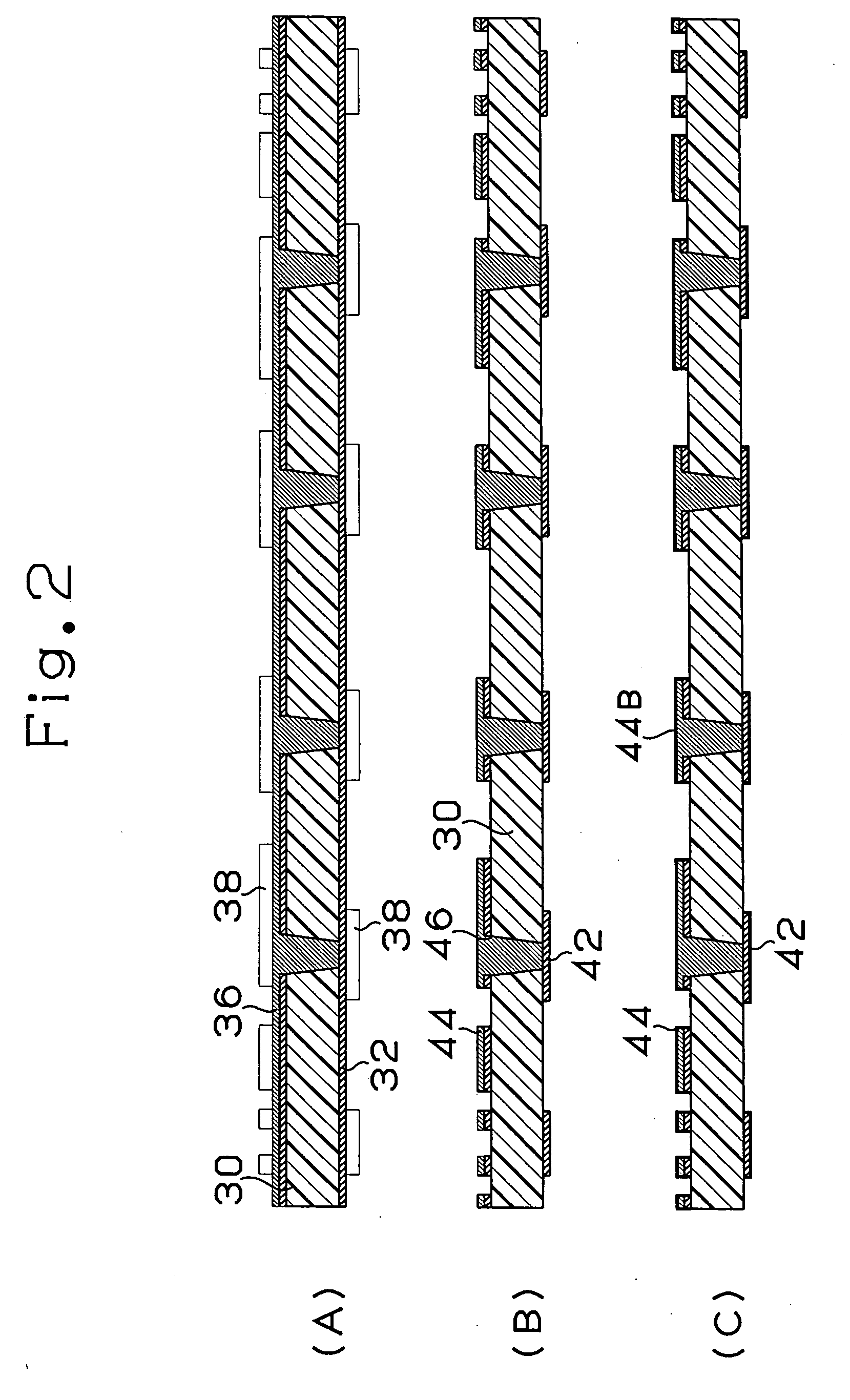Multilayer printed wiring board and manufacturing method of the multilayer printed wiring board
a printing method and wiring board technology, applied in the direction of electrical apparatus construction details, electrical apparatus contruction details, etc., can solve the problems of difficult buffering of stress, difficult transmission of generated stress, and decrease in the degree of deterioration
- Summary
- Abstract
- Description
- Claims
- Application Information
AI Technical Summary
Benefits of technology
Problems solved by technology
Method used
Image
Examples
first embodiment
EXAMPLE 1-1
[0125] (1) First, a double sided circuit board intended to constitute a multilayer circuit board is manufactured. This circuit board utilizes a double sided copper-clad lamination obtained by overlaying prepreg 30 as B-stage created by impregnating glass fabric with expoxy resin and copper foil 32 and pressing with heat as a starting material (FIG / L(A)).
[0126] The thickness of this insulation base material was 75 μm and the thickness of the copper foil was 12μm. It is permissible to use a copper foil thicker than 12 μm as this layered board and then adjust the thickness of the copper foil to 12 μm by etching treatment (FIG / L(B)).
[0127] (2) The copper foil 32 and the insulation base material 30 were drilled by irradiating the double sided circuit board having the copper foil 32 with carbon dioxide gas laser and a via hole formation opening 34 reaching the copper foil 32 on an opposite side was formed (FIG / L(C)). Further, the desmear treatment was performed within the op...
example 1-2
[0147] This example is the same as the example 1-1 except that no OPS layer was formed on a solder pad in which the corrosion resistant layer of the example 1-1 is not formed.
example 1-3
[0148] This example is the same as the example 1-1 except that corrosion resistant layer of nickel-palladium-gold was formed on the solder pad in which the corrosion resistant layer of the example 1-1 was formed.
PUM
| Property | Measurement | Unit |
|---|---|---|
| temperature | aaaaa | aaaaa |
| thickness | aaaaa | aaaaa |
| thickness | aaaaa | aaaaa |
Abstract
Description
Claims
Application Information
 Login to View More
Login to View More - R&D
- Intellectual Property
- Life Sciences
- Materials
- Tech Scout
- Unparalleled Data Quality
- Higher Quality Content
- 60% Fewer Hallucinations
Browse by: Latest US Patents, China's latest patents, Technical Efficacy Thesaurus, Application Domain, Technology Topic, Popular Technical Reports.
© 2025 PatSnap. All rights reserved.Legal|Privacy policy|Modern Slavery Act Transparency Statement|Sitemap|About US| Contact US: help@patsnap.com



